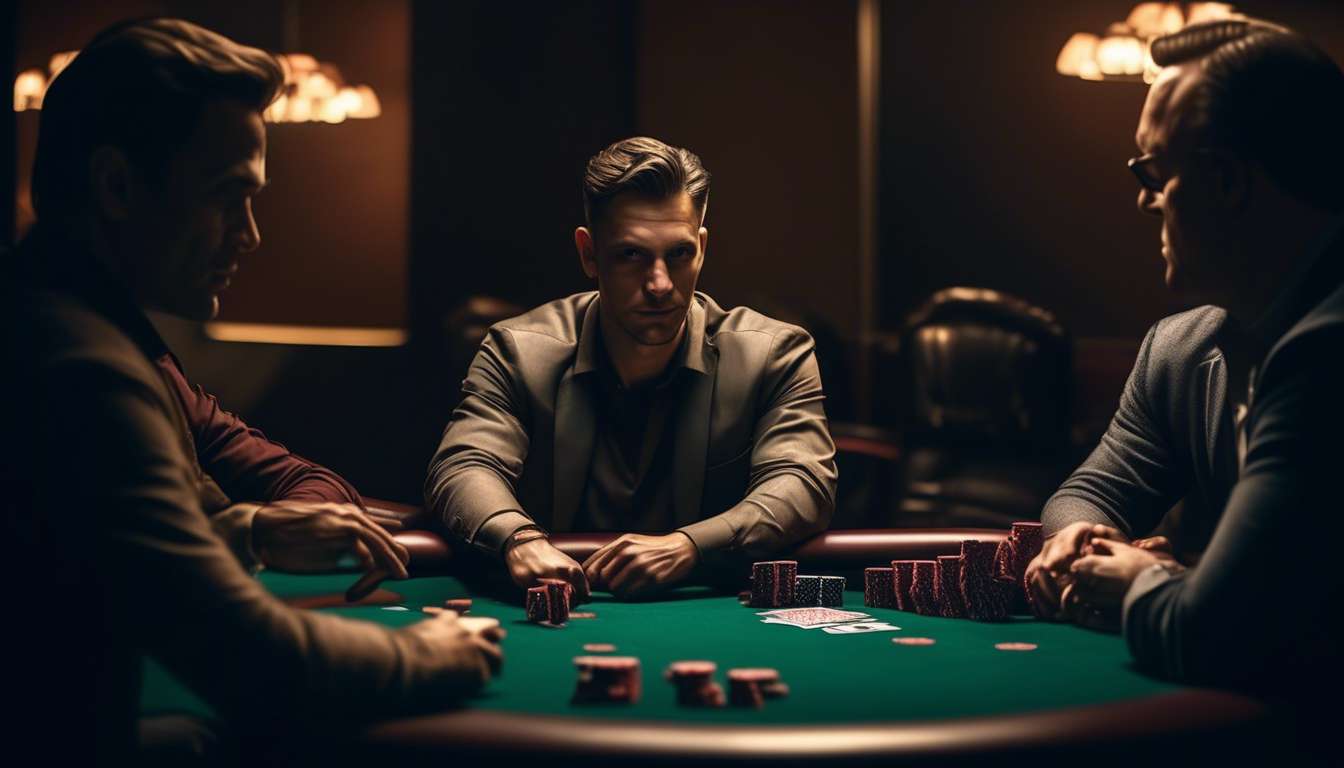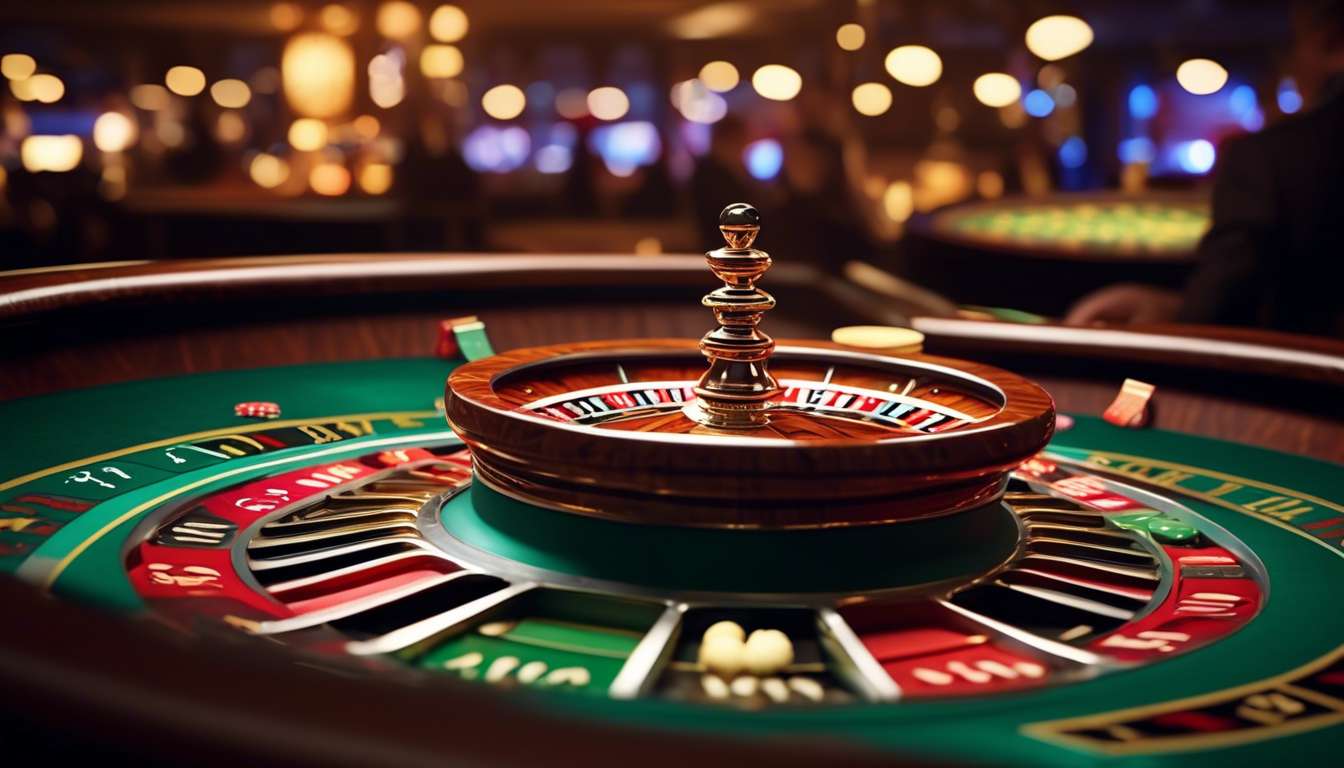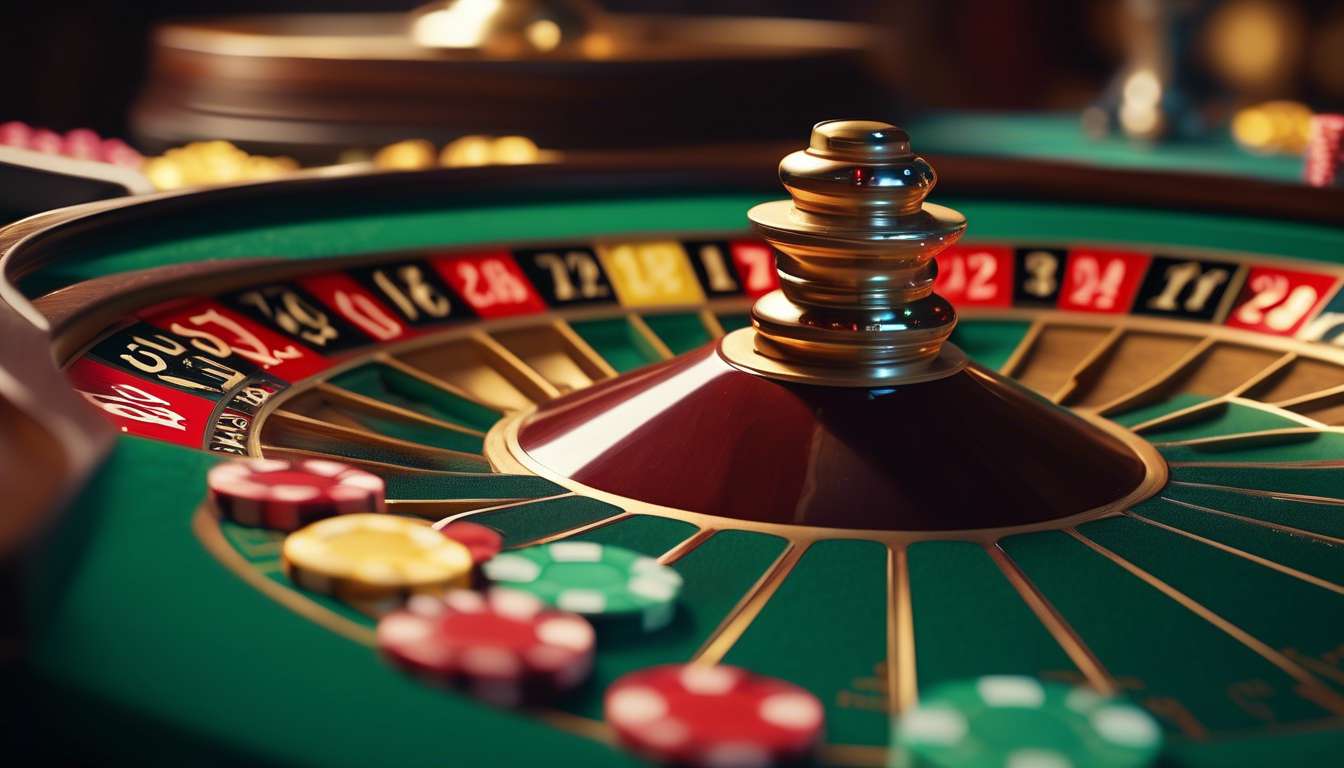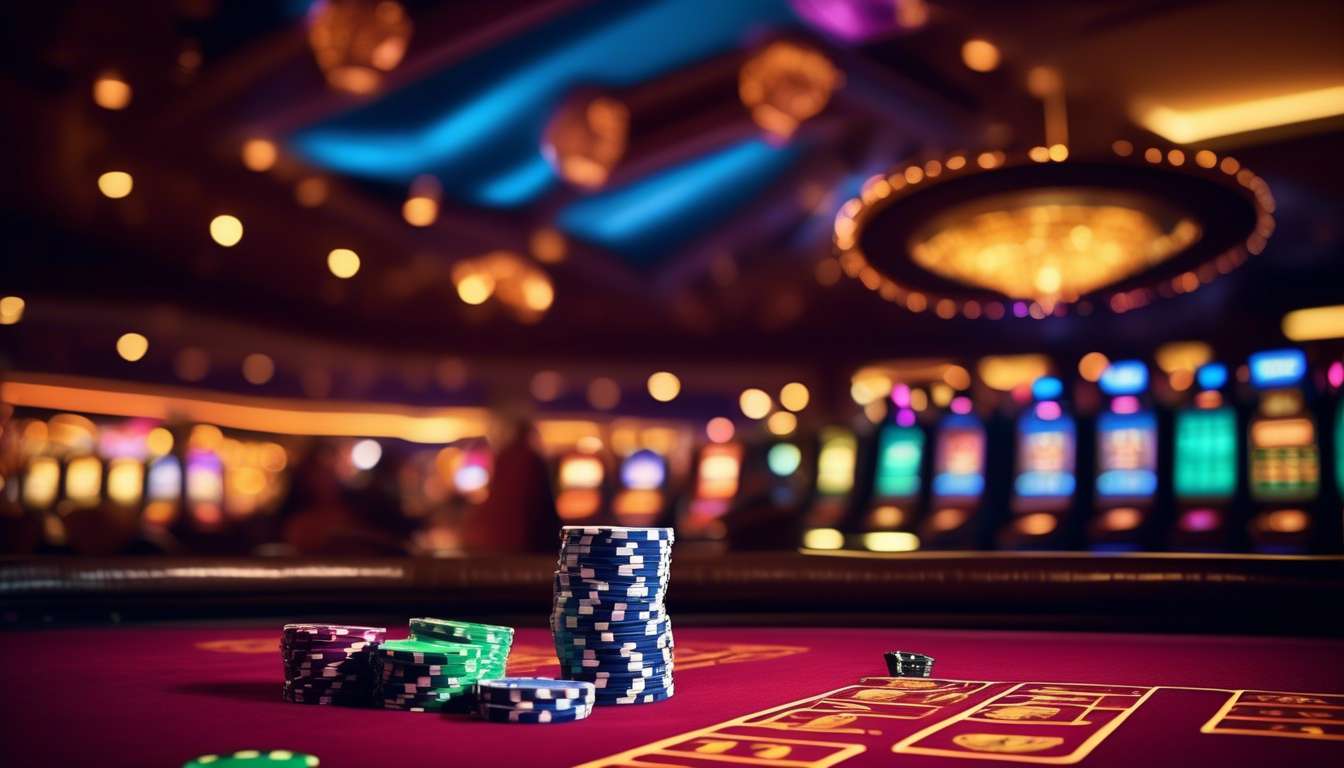In the exhilarating realm of poker, where every hand dealt can be a gateway to triumph or defeat, we find ourselves constantly seeking the edge that sets us apart from our opponents. Bluffing, an art form in its own right, is one of the most powerful tools in our strategic arsenal.
Together, we embark on a journey to master this skill, understanding that successful bluffing requires more than mere deception; it demands a keen awareness of timing, psychology, and the ability to read the table.
Key Elements of Successful Bluffing:
-
Timing: Knowing when to bluff is crucial. Bluffing too often can make you predictable, while rare but well-timed bluffs can catch opponents off guard.
-
Psychology: Understanding the mindset of your opponents helps determine if they are likely to fold or call your bluff.
-
Reading the Table: Observing players’ betting patterns and body language provides insights into their potential hands and reactions.
As we delve into the nuances of bluffing techniques, we will explore:
- How to craft the perfect bluff
- When to execute it
- How to gauge the reactions of those around us
Our collective goal is to enhance not only our own gameplay but also our understanding of the intricate dance between risk and reward that defines the game of poker.
Let’s sharpen our instincts and elevate our strategy together.
Mastering the Art of Bluffing
To master the art of bluffing, one must understand how to manipulate perceptions and read opponents effectively.
Bluffing isn’t just about the cards we hold; it’s a sophisticated strategy rooted in psychology. We’re not merely playing our hands; we’re playing our opponents’ minds. By creating a narrative at the table, we can lead others to form conclusions that benefit us.
Key elements of bluffing include:
- Creating a compelling narrative
- Making bold moves
- Using subtle cues such as deliberate pauses or specific betting patterns
When we engage in a game of poker, we become part of a community that thrives on intuition and shared experiences. Our sense of belonging is strengthened as we learn to anticipate reactions and adjust our strategies accordingly.
Successful bluffing involves:
- Recognizing tells
- Understanding the psychology behind fellow players’ actions
Together, we can refine our skills, embracing the art of deception while fostering camaraderie at the poker table.
The Anatomy of a Successful Bluff
A successful bluff hinges on our ability to craft a believable story that aligns with our actions at the table. As part of a community that thrives on strategy and camaraderie, we know that every move counts. Bluffing isn’t just about deception; it’s about weaving a narrative that fits the situation and convinces others to see the game through our eyes. Our chips, bets, and timing must collectively tell a tale that resonates with the psychology of our fellow players.
To execute this, we rely on keen observation and adaptability.
- We analyze our opponents’ tendencies, noting their reactions to different scenarios.
- By understanding these patterns, we can strategically choose the right moment to bluff.
It’s a dance of psychological insight and tactical execution, where we balance risk and reward.
Together, as we hone our skills, we foster an environment where our shared experiences enrich our journey. Bluffing becomes more than a tactic; it’s a testament to our shared understanding and growth.
Psychological Tactics in Bluffing
In poker, we leverage subtle psychological cues to manipulate our opponents’ perceptions and decisions. Our strategy hinges on understanding the psychology behind bluffing, allowing us to craft illusions that sway the table in our favor.
Every player seeks to belong in the game’s intricate dance, creating an atmosphere where psychological tactics flourish. By projecting confidence or feigning uncertainty, we can seed doubt or conviction in our opponents’ minds.
Our psychological strategy involves several key elements:
- Reading the room—identifying when to strike and when to hold back.
- Maintaining eye contact.
- Managing our body language.
- Controlling our breathing.
These elements are turned into tools of misdirection. The essence of bluffing isn’t just about the cards; it’s about the stories we tell and the emotions we evoke.
By tapping into the collective desire to connect and belong, we create scenarios that compel our opponents to act in predictable ways, securing our path to victory.
Understanding Player Behavior
To truly excel in poker, we must keenly observe and interpret a range of player behaviors at the table. It’s not just about the cards we hold but understanding the psychology behind each player’s actions.
When we pay attention to:
- Betting patterns
- Body language
- Verbal cues
we gain insights that shape our bluffing strategy. Recognizing whether a player is confident or uncertain can make all the difference in how we approach our next move.
By fostering a sense of belonging within our poker community, we learn from one another’s experiences and gain shared insights into player behavior. We become attuned to the subtle signs that indicate when an opponent might be bluffing or holding a strong hand.
Understanding these nuances allows us to make more informed decisions, giving us an edge in the game. This collective knowledge strengthens our strategy, ensuring we’re not only part of the game but genuinely connected to the dynamics unfolding at the table.
Advanced Bluffing Strategies
To elevate our game, we must master a range of sophisticated bluffing techniques that keep opponents guessing and off-balance. As a community of poker enthusiasts, we thrive on the thrill of outsmarting rivals with clever strategies. The essence of advanced bluffing lies in understanding the psychology behind our opponents’ decisions and using that insight to our advantage.
Key Bluffing Techniques:
-
Semi-Bluff:
- By betting or raising with a drawing hand, we create uncertainty.
- This strategy pressures our opponents into folding, even if we don’t have the strongest hand at the moment.
-
Reverse Bluff:
- Play passively with a strong hand.
- Lull opponents into a false sense of security before striking decisively.
-
Timing:
- Bluffing too frequently can backfire.
- We must read the table dynamics carefully.
By integrating these advanced bluffing strategies, we strengthen our collective identity as savvy, unpredictable players who relish the mental chess of poker.
Enhancing Bluffing Skills Through Practice
To truly excel in poker, we must dedicate countless hours to honing our bluffing skills through deliberate practice and real-game experiences. Bluffing isn’t just about the cards we hold; it’s about mastering the art of deception and psychology.
By immersing ourselves in the game, we can develop a keen sense of timing and become adept at reading our opponents’ tells.
Bluffing is a strategy that requires:
- Confidence
- Adaptability
Each hand is an opportunity to refine our technique, testing different approaches to see what resonates with our unique style. Through practice, we learn to:
- Control our body language
- Maintain a consistent demeanor
These skills are crucial for successful bluffing.
The poker table is where we bond with fellow players, sharing the highs and lows of each round. Together, we can exchange insights and strategies, strengthening our community and improving our game.
By committing to this journey, we enhance not only our bluffing skills but also our sense of belonging in the poker world.
Bluffing in Different Poker Variants
In poker, various variants like Texas Hold’em, Omaha, and Seven-Card Stud require us to adapt our bluffing techniques to suit their distinct dynamics. Each variant has its own rhythm, and understanding these nuances strengthens our strategy.
In Texas Hold’em:
- We often leverage community cards.
- Bluffs become more convincing by considering the shared information available to all players.
In Omaha:
- Players hold four hole cards.
- A keen sense of psychology is needed to gauge opponents’ potential hands and tailor bluffs accordingly.
In Seven-Card Stud:
- Exposed cards present a unique challenge.
- Acute observation is required to time bluffs when opponents least expect them.
Our community of players thrives on these shared experiences, honing our skills together. By embracing the unique aspects of each variant, we enhance our understanding of bluffing and weave it seamlessly into our overall strategy.
Let’s continue to share insights and support each other, creating a sense of belonging as we navigate the intricate world of poker together.
Leveraging Bluffs for Strategic Advantage
Mastering the art of bluffing gives us a significant edge, allowing us to manipulate opponents’ perceptions and control the game’s flow. By understanding the psychology behind our opponents’ decisions, we can craft a strategy that turns their assumptions into our advantage.
Key Aspects of Bluffing:
- It’s not just about the cards we hold; it’s about the story we tell with our actions.
- Bluffing effectively means recognizing when our opponents are likely to fold and when they’re poised to call our bets.
Our strategy hinges on timing and observation:
- Watch for cues: Look for signs of hesitation or confidence from opponents.
- Decide when to bluff: Use those cues to determine the best moment to bluff.
- Blend calculated risks with psychological insights: Create a dynamic that keeps opponents on edge.
Our collective goal is to blend in seamlessly, making our bluffs indistinguishable from genuine plays. This cohesion builds a strategic advantage, pushing us closer to success. By fostering a sense of belonging within the game’s intricate dance, we enhance our overall gameplay strategy.
What are the ethical considerations when using bluffing techniques in poker?
When we think about ethical considerations in any game, it’s crucial to reflect on the impact of our actions.
In poker, using bluffing techniques can raise questions about honesty and fairness.
As a community, we should strive to uphold values that promote integrity and respect for the game.
By being mindful of how we employ bluffing strategies, we can ensure a more enjoyable and ethical playing environment for everyone involved.
How does bluffing differ in online poker compared to live poker games?
In online poker, bluffing differs from live games due to the lack of physical tells and face-to-face interaction.
Key elements to rely on in online poker:
-
Betting Patterns: Observing how opponents bet in different situations can provide insights into their strategies.
-
Timing: Pay attention to how quickly or slowly opponents make their decisions, as this can indicate the strength of their hand.
-
Previous Gameplay: Analyze past games to identify opponents’ tendencies and adapt your strategy accordingly.
To successfully bluff in the digital realm, it requires:
-
Sharper Observation Skills: Without physical cues, more focus is needed on digital behavior.
-
Strategic Thinking: Plan your bluffs carefully, considering how your actions fit into the overall game flow.
Adapting tactics to the virtual environment can help navigate the nuances of online poker and increase your chances of success. By mastering these skills, you can effectively compensate for the absence of traditional tells and enhance your online poker strategy.
What role does table image play in the effectiveness of a bluff?
Table Image and Bluffing Success
The impact of table image on the success of a bluff is significant. Projecting a strong or tight image allows us to manipulate opponents into folding when we bluff.
Conversely, if we have a loose or weak table image, our bluffs may be less effective, as opponents are more likely to call us out.
Key Steps to Maximize Bluffing Effectiveness:
-
Assess Your Image: Regularly evaluate how opponents perceive your play style at the table.
-
Adjust Strategy Accordingly:
- If perceived as strong/tight, consider bluffing more frequently.
- If perceived as loose/weak, be more selective and strategic with bluffs.
By understanding and adjusting to your table image, you can enhance the effectiveness of your bluffing strategy.
Conclusion
In conclusion, bluffing in poker is a powerful tool that can lead to success if used strategically.
By mastering the art of bluffing and understanding player behavior, you can enhance your skills and leverage bluffs to gain a competitive edge.
Remember to practice different bluffing techniques in various poker variants to keep your opponents guessing.
With the right psychological tactics and advanced strategies, you can become a formidable player at the poker table.
Keep bluffing and keep winning!




